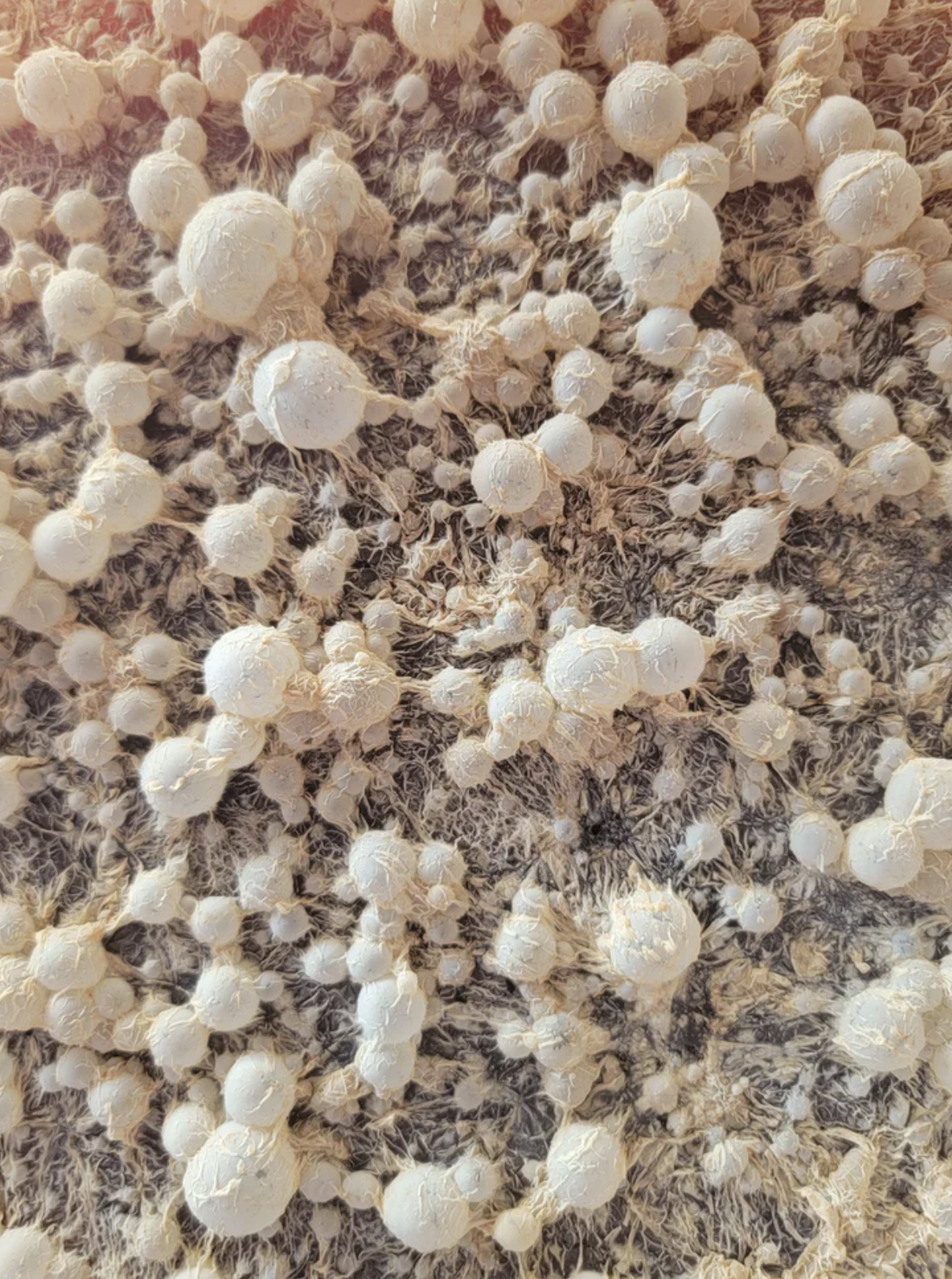
Harnessing the Power of Lactobacillus : Lacto-Fermentation for Enhanced Gardening
Share

(Above photo is a pellicle formed on top of the Fermented Plant extracts)
In the world of gardening, there is a growing appreciation for natural and sustainable methods that promote healthy plant growth and abundant harvests. One such technique gaining popularity is lacto-fermentation, a process that utilizes beneficial bacteria like Lactobacillus casei to transform plant extracts into potent fertilizers. This blog post explores the fascinating world of lacto-fermentation, its benefits, and how you can harness its power to enhance your gardening efforts.
Understanding Lacto-Fermentation:
Lacto-fermentation is a traditional preservation method that has been used for centuries to extend the shelf life of food. It involves the conversion of sugars present in plants into lactic acid by the action of lactic acid bacteria, primarily Lactobacillus species. This process not only preserves the food but also enhances its nutritional value and flavor. In recent years, gardeners have adapted this fermentation technique to create powerful plant fertilizers.
The Role of Lactobacillus casei:
Lactobacillus casei, a strain of lactic acid bacteria, plays a crucial role in lacto-fermentation. This species is known for its ability to thrive in a wide range of environments and can effectively convert sugars into lactic acid. L. casei also produces various enzymes and antimicrobial compounds that contribute to the fermentation process. These beneficial bacteria not only break down the plant matter but also unlock essential nutrients and beneficial compounds that enhance plant growth.
Preparing Fermented Plant Extracts:
To create fermented plant extracts using lacto-fermentation, you'll need some basic ingredients and equipment:
-
Fresh plant material: Choose a variety of nutrient-rich plant materials such as weeds, kitchen scraps, or plant residues. Make sure they are free from pesticides or chemical treatments.
-
Water: Use non-chlorinated water to avoid any potential harm to the beneficial bacteria.
-
Sugar source: Adding a small amount of sugar, like molasses, this helps facilitate fermentation by providing a food source for the bacteria.
-
Airtight container: Use a fermentation vessel to allow for gas exchange while keeping out oxygen.
The Fermentation Process:
-
Chop the plant material into small pieces to increase surface area and aid fermentation.
-
Place the plant material in the fermentation vessel, leaving some space at the top.
-
Dissolve a small amount of molasses in non-chlorinated water to create the inoculant for your extract.
-
Pour the liquid into the fermentation vessel, ensuring that the plant material is completely submerged.
-
Cover the container with a fermentation lid to allow gas escape but does not allow air to enter. Lactobacillus are Anaerobic (no air) microbes .
-
Store the vessel in a cool, dark place for several weeks 21 days or more. More the better to allow fermentation to finish.
-
After a few weeks, the liquid will develop a fermented odor and ph if you check it will have dropped to about 3.5 to 4 indicating a successful fermentation ! Strain out solids and store.
Application in Gardening:
Once your fermented plant extract is ready, it can be diluted with water and applied to your garden plants in various ways:
-
Foliar Spray: Dilute the fermented extract with water (usually a 1 to 4 oz per gallon of water and apply it as a foliar spray. This allows the plant to absorb the nutrients through its leaves, promoting healthier growth and increased resistance to pests and diseases.
-
Soil Drench: Mix the fermented extract with water at 1 to 4 ozs per gallon and water the soil around the base of your plants. This helps improve soil fertility, enhances microbial activity, and increases nutrient availability to the plants' roots.
Benefits of Lacto-Fermented Plant Extracts:
-
Improved Nutrient Availability: Lacto-fermentation breaks down complex plant compounds, making essential nutrients more accessible to plants. This can result in improved growth, better fruiting, and increased overall plant vitality.
-
Enhanced Soil Health: The beneficial bacteria present in lacto-fermented extracts contribute to the development of a robust soil microbiome. This promotes nutrient cycling, improves soil structure, and reduces the risk of plant diseases.
-
Environmentally Friendly: Lacto-fermentation is a sustainable and organic approach to gardening. By utilizing natural processes and reducing reliance on chemical fertilizers, you can minimize the impact on the environment.
Conclusion:
Lacto-fermentation with Lactobacillus casei is a powerful tool that can greatly enhance your gardening efforts. By transforming plant materials into nutrient-rich extracts, you can provide your plants with a natural boost, promoting healthier growth, increased resistance to pests and diseases, and improved overall vitality. Embracing lacto-fermentation in your gardening routine not only benefits your plants but also contributes to a more sustainable and eco-friendly approach to cultivation. Experiment with this traditional technique and witness the transformative effects it can have on your garden.